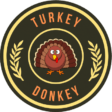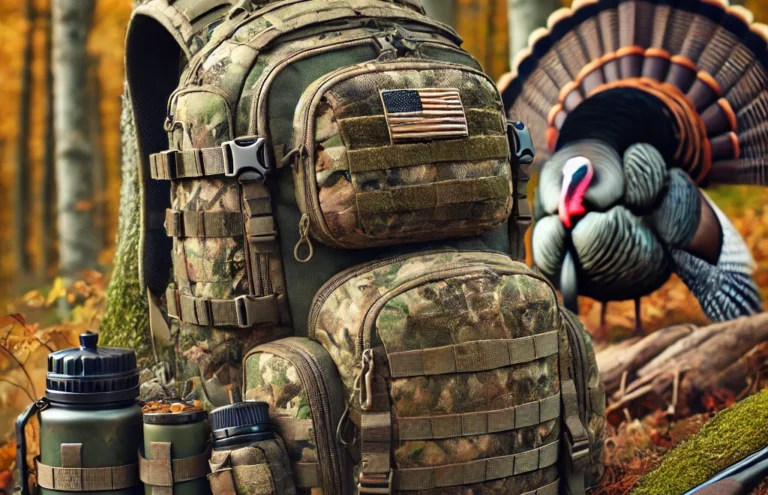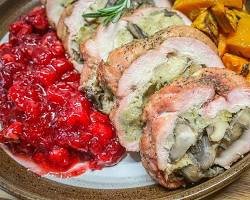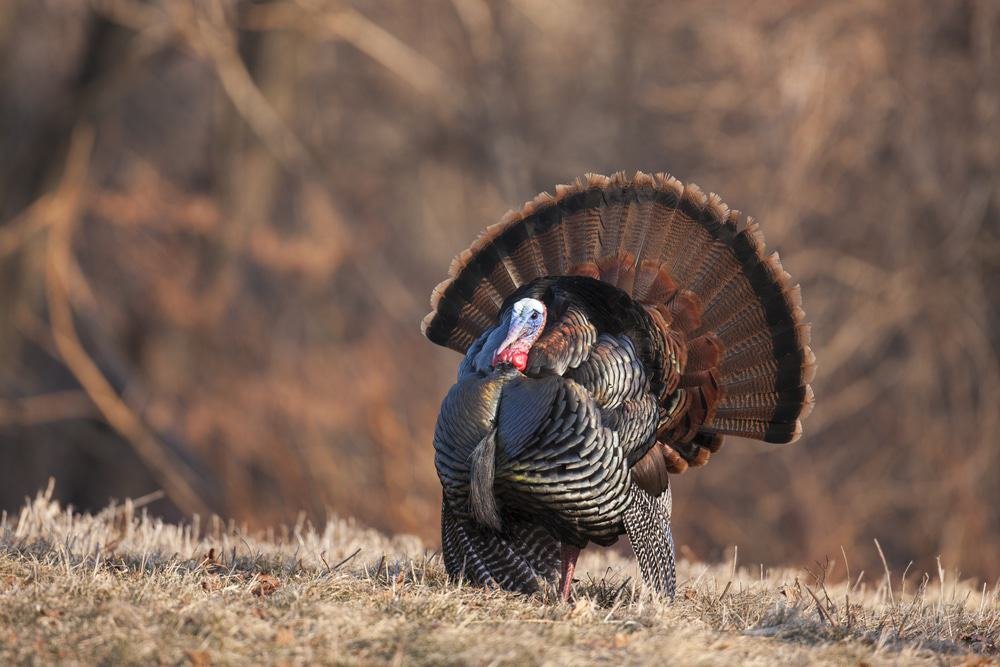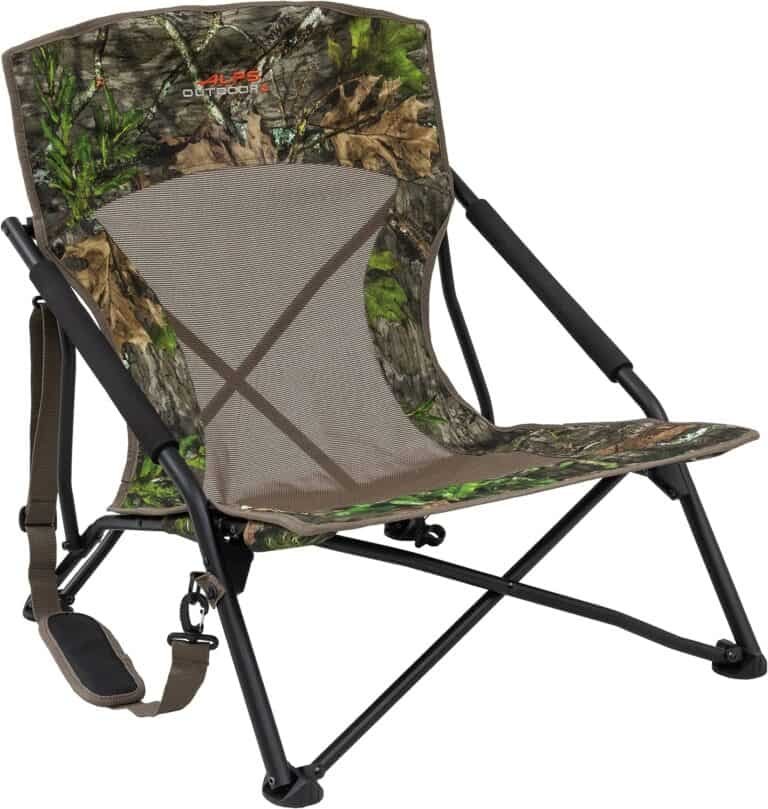Minnesota Turkey Hunting Season – Powerful Guide for 2024
As the crisp autumn air settles over Minnesota’s rolling hills and dense woodlands, the sound of a gobbling tom echoes through the golden landscape. For seasoned hunters and eager newcomers alike, this is the moment they’ve been waiting for—the Minnesota turkey hunting season.
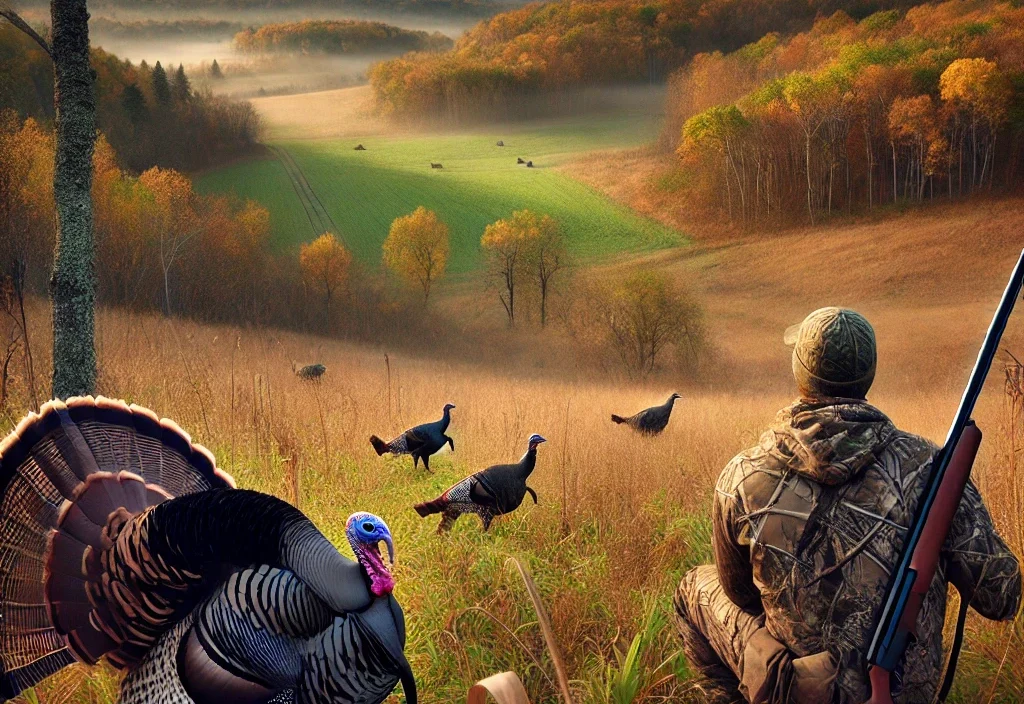
Minnesota’s turkey hunting season is more than just a tradition; it’s an experience that blends the beauty of nature with the thrill of the hunt.
From the early morning stillness, broken only by the soft rustle of leaves, to the exhilarating sight of a wild turkey stepping into view, this season offers a challenge and excitement that hunters crave.
Whether you’re a veteran or preparing for your first hunt, understanding the nuances of Minnesota’s unique hunting terrain and wildlife can make all the difference in your success.
In this guide, we’ll explore everything you need to know to make the most of your turkey season—from regulations and best practices to the gear and strategies that will give you the edge.
Spring Season: The Prime of Turkey Hunting
From April to May, the spring season is a highlight for Minnesota turkey hunters. It’s a time when male turkeys, known as toms, are in full courtship mode, making them more responsive to hunting strategies.
Fall Season: A Distinct Hunting Experience
Contrasting the spring, the fall season, which spans from September to December, offers a different yet equally rewarding hunting experience.
The Cultural Impact of Turkey Hunting in Minnesota
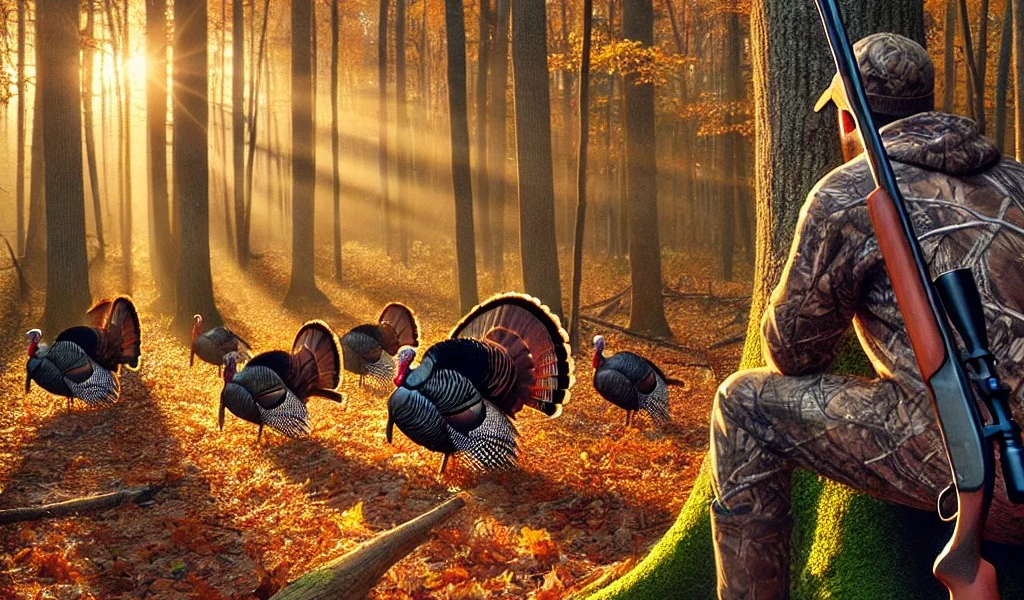
Turkey hunting is a significant aspect of Minnesota’s outdoor culture. It brings communities together and connects them to their natural surroundings. This section will explore the historical evolution of turkey hunting in the state, its contribution to Minnesota’s outdoor heritage, and its role in community building and fostering a deeper appreciation for wildlife.
The Journey of Reintroducing Turkeys
The near-extinction of wild turkeys in the early 20th century and their triumphant return through conservation success. This section will narrate the comprehensive story of their reintroduction, detailing the collaborative efforts, challenges faced, and strategies that led to the resurgence of turkey populations in Minnesota.
Present-Day Population and Habitat Analysis
This section will provide current statistics and insights into Minnesota’s turkey population, focusing on their distribution, habitat preferences, and the factors contributing to their thriving presence. It will also cover the turkey’s expansion into new areas, including northern Minnesota, and what this means for future hunting seasons.
Legal Aspects of Turkey Hunting: Regulations and Licensing
Navigating the licensing process is a key step for any hunter. This section will detail how to obtain a turkey hunting license in Minnesota, including the fees, application process, and special considerations for groups such as youth, non-residents, and hunters with disabilities.
Turkey Hunting Strategies and Techniques
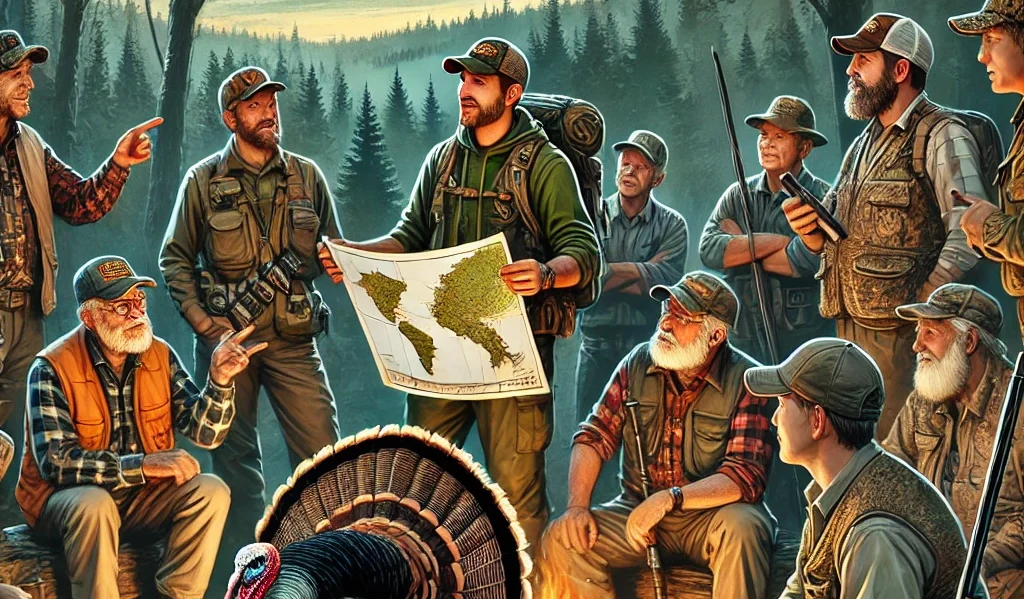
Art of Turkey Calling in Spring
Turkey calling is more than just making sounds—it’s about speaking the language of these magnificent birds. Understanding the nuances of different calls and when to use them can mean the difference between success and failure in the field.
Basic Calls Every Hunter Should Master
- Yelp: The most fundamental turkey vocalization, consisting of a series of notes that rise and fall in pitch. Hens typically yelp 4-8 times in sequence when trying to locate other birds. Master this call first using a diaphragm or slate call.
- Cluck: A short, sharp note used by turkeys to get attention. Think of it as saying “hey” in turkey language. This call works well when birds are in sight but hesitant to approach.
- Purr: A soft, rolling sound turkeys make when content and feeding. This is an excellent “closer” call when birds are within range but need reassurance.
Advanced Calling Techniques
- Cutting: Aggressive, fast yelping typically used by excited hens. This call can trigger an immediate response from dominant toms.
- Fighting Purr: An aggressive form of purring used during confrontations. This can be particularly effective during spring when toms are territorial.
- Tree Calls: Soft, muffled yelps made while still roosted. Essential for early morning hunting.
Psychology of Turkey Response
Turkeys respond differently to calls based on:
- Time of day
- Stage of breeding season
- Weather conditions
- Hunting pressure
The key is reading the bird’s response and adjusting accordingly. If a tom answers but won’t commit, reduce calling frequency and volume.
Decoy Tactics and Placement

Effective decoy setup can dramatically increase your chances of success during spring hunting.
Types of Decoys
- Hen Decoys
- Feeding position
- Standing alert
- Breeding position
- Jake Decoys
- Subordinate male
- Can trigger territorial response
- Tom Decoys
- Full strut
- Use with caution—may intimidate smaller birds
Strategic Placement
- Position decoys 15-20 yards from your setup
- Ensure clear shooting lanes
- Face decoys toward your position
- Consider wind direction for scent control
- Create realistic scenarios:
- Single hen
- Hen and jake
- Small group of hens
Combining Calls with Decoys
- Match calling intensity to your decoy setup
- Use softer calls with single hen setups
- More aggressive calling works with multiple decoy setups
- Adjust based on tom’s reaction
Scouting and Understanding Turkey Habitats in Spring
Success in turkey hunting begins long before the season opens.
Key Scouting Elements
- Physical Signs
- Track patterns
- Droppings (J-shaped for toms, spiral for hens)
- Wing drag marks
- Dusting areas
- Scratching in leaves
- Roosting Areas
- Large, mature trees
- Protected from wind
- Near water sources
- Clear flight paths
- Feeding Zones
- Agricultural fields
- Forest openings
- Mast-producing areas
- Green vegetation patches
Understanding Spring Movement Patterns
- Morning fly-down routes
- Mid-day loafing areas
- Evening feeding patterns
- Strut zones and breeding areas
Strategies for Fall Turkey Hunting
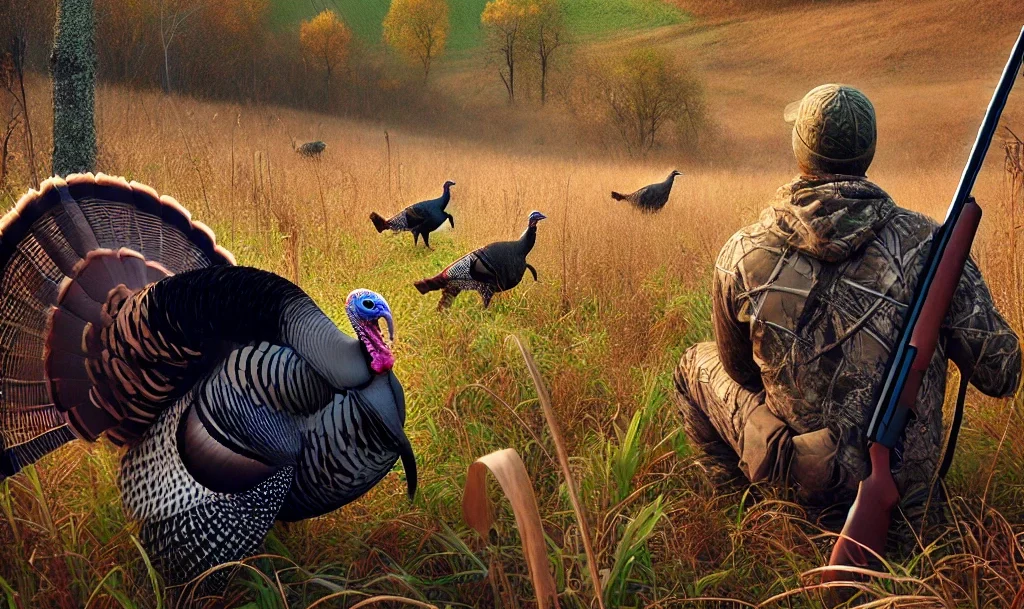
Fall hunting requires a different mindset and approach from spring tactics.
Fall Flock Dynamics
- Family groups with hens and juveniles
- Separate bachelor groups of toms
- More predictable daily patterns
- Less vocalization
Effective Fall Tactics
- Break and Scatter
- Locate flock
- Rush to scatter birds
- Set up and call scattered birds back
- Pattern and Ambush
- Identify travel routes
- Set up along paths
- Focus on feeding areas
- Calling Strategies
- Kee-kee run for young birds
- Assembly yelps for adults
- Less aggressive than spring calling
Gear Adjustments for Fall Hunting
Adapting your equipment for fall conditions is crucial for success.
Essential Fall Gear Modifications
- Camouflage
- Switch to fall patterns
- Layer for changing temperatures
- Focus on break-up patterns
- Calls
- Emphasis on kee-kee runs
- Assembly yelps
- Lost young bird calls
- Decoys
- Fewer or no decoys are needed
- Focus on feeding hen poses
- Avoid strutter decoys
Additional Fall Considerations
- Weather protection gear
- Comfortable seating for longer sits
- Thermal clothing layers
- Different ammunition selection for fall birds
- Enhanced visibility in dense fall foliage
Remember that success in turkey hunting comes from adapting these techniques to your specific hunting area and conditions. Always check local regulations regarding seasons, calling devices, and decoy use.
The Essentials of Turkey Hunting Gear
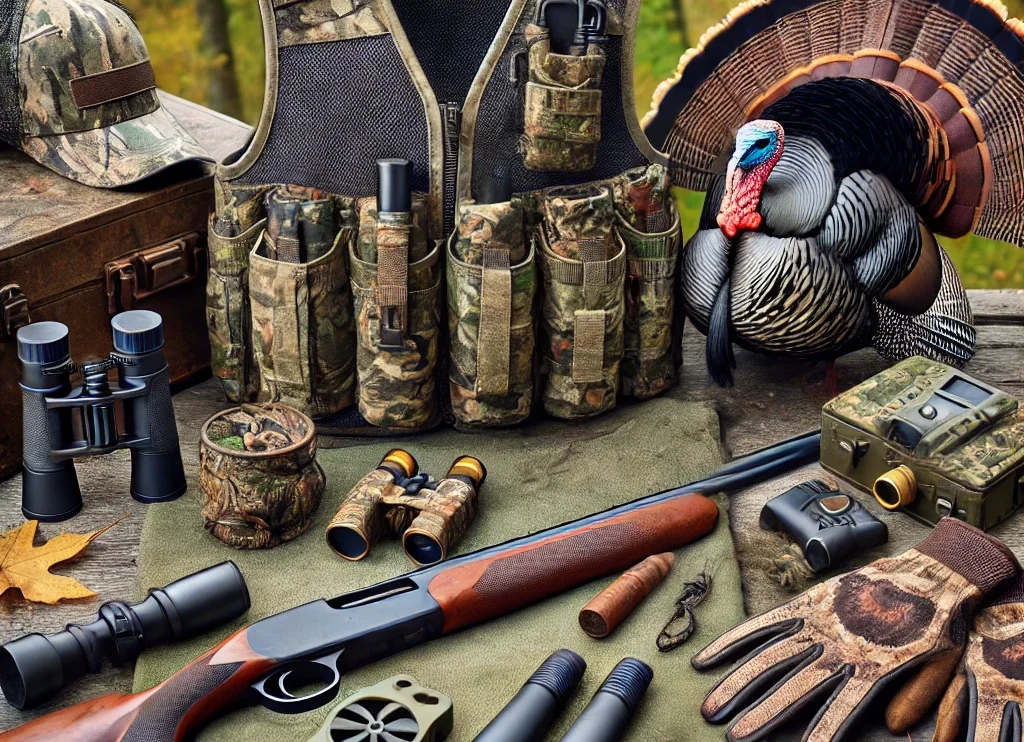
Firearms and Archery: Choosing Your Tools
Selecting the right weapon is a fundamental decision for any hunter. This comprehensive guide will cover the advantages and challenges of using different types of shotguns and archery equipment for turkey hunting in Minnesota. It will also discuss the types of ammunition, bow setups, and considerations for effective and ethical hunting.
Camouflage and Accessory Essentials
Camouflage plays a crucial role in successful turkey hunting. This section will delve into selecting the right camouflage for the Minnesota terrain, using blinds and other essential accessories to enhance the hunting experience.
Conservation and Sustainable Hunting Practices
DNR’s Role in Turkey’s Population Management
The Minnesota Department of Natural Resources is pivotal in managing the turkey population. This section will explore their monitoring strategies, research efforts, and their role in ensuring sustainable hunting practices in the state.
Habitat Conservation: A Collaborative Effort
This section highlights habitat conservation initiatives. It will discuss land management, food plots, and hunters’ roles in supporting these efforts and explain how these initiatives contribute to a thriving turkey population and the overall health of Minnesota’s ecosystems.
Advanced Tips for Successful Turkey Hunting
Expert Strategies for Turkey Hunting
This part will offer advanced tips and strategies for novice and experienced hunters. It will include insights into sophisticated calling techniques, strategic planning for hunts, and adapting various environmental and behavioral patterns to turkeys.
Ethical Hunting Practices and Wildlife Respect
Promoting ethical hunting is crucial. This section will discuss the importance of respectful and responsible hunting practices, understanding the ecosystem, and the hunter’s role in wildlife conservation and management.
Conclusion: Minnesota Turkey Hunting Season
The conclusion will summarize the guide, emphasizing the joy, cultural significance, and environmental importance of turkey hunting in Minnesota. It will encourage readers to engage in this tradition responsibly, highlighting the role of hunters in conservation and the shared responsibility of preserving this legacy for future generations.
